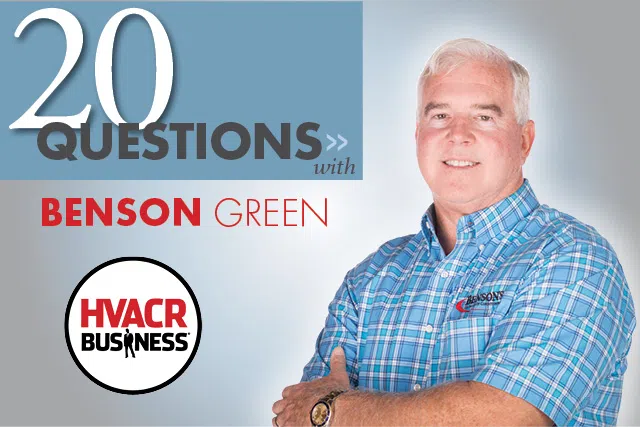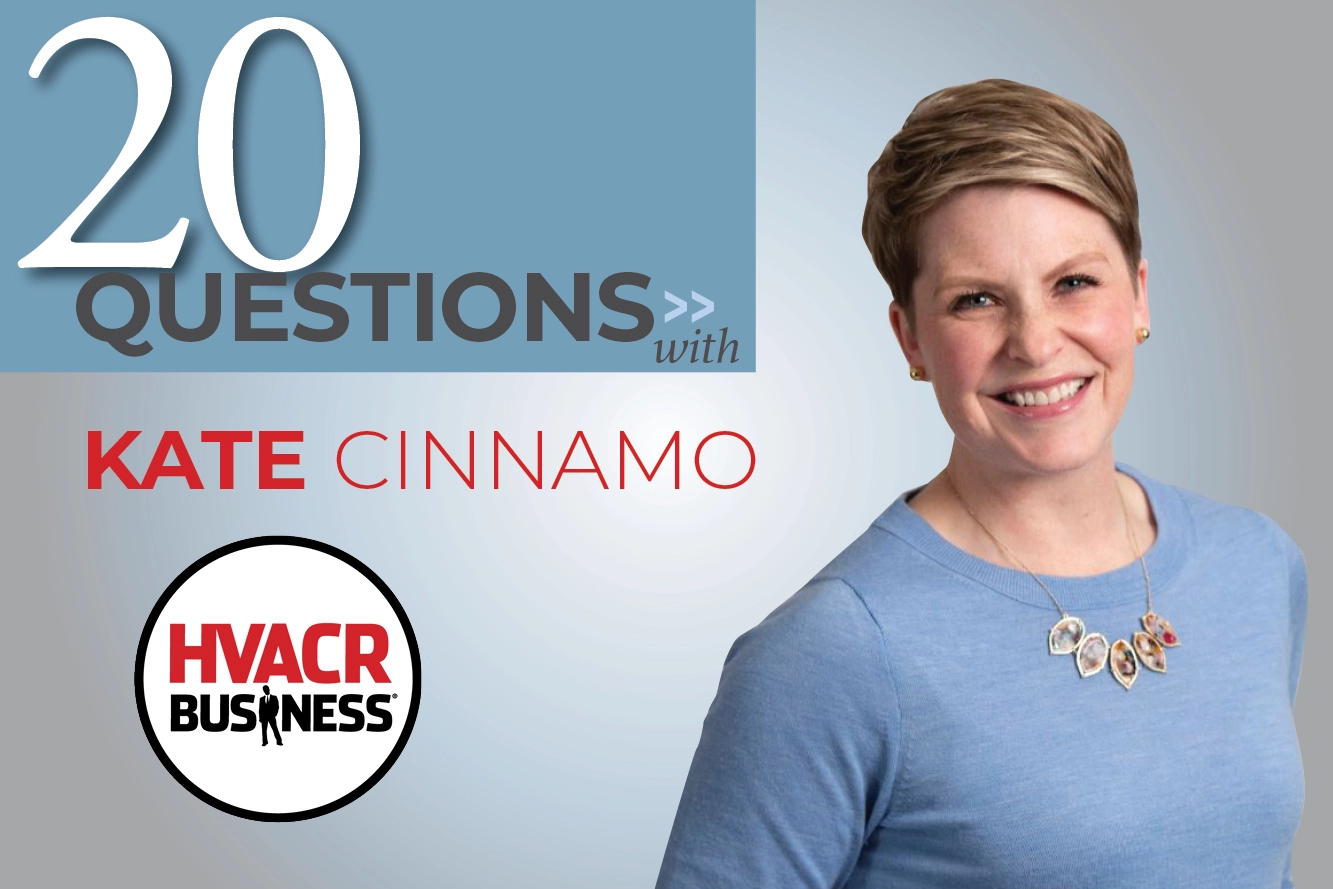We sat down with Benson Green, president of Benson’s Heating and Air Conditioning in Tallahassee, Fla. Benson discussed the value of community, growing your own technicians and having a solid succession plan.
1. How did you get started?
My father was an engineer and director of the physical plant at Florida State University. While I was in high school, he got me a job with a local air conditioning company as a helper. I just kind of fell in love with the whole service technician side of the business. I was 15 and every summer I’d go to work for them until football practice started. When I was close to graduating, I decided that I wanted to make this a career. I told my grandfather, who at one time had been comptroller for the state of Florida and was now president of a bank he started, that I wanted to do this instead of going to college. He and my father both agreed it was a good move.
2. What did you do those five years?
I worked for three different air conditioning companies. I learned it all on the job training. The last man I worked for taught me more about life and business and relationships. That’s really where I got my basis to go in business. I wanted to buy his business because he had no children that were going to be in the business or grandchildren at that point. He didn’t want to do that, so I went to work for a commercial company.
3. What’s the best advice he gave you?
We were working on a chiller or something and I tried several times to break a nut loose and I couldn’t. I didn’t have enough strength or “enough ass” is what he called it. I said, “I can’t get that. I think you’re going to have to get it.” He looked at me and said, “Well, if I have to do it, what do I need you for?” I said, “Okay, okay, give me one more chance here.”
4. How did you start on your own?
After I put in my two weeks’ notice and before my two weeks were up, the commercial company I was going to work for notified me that they had a hold on new hires. At that point, I started to look at going into business for myself. That’s really how I got forced into starting it.
5. How did you make that leap?
I had asked my grandfather to borrow $5,000 and he actually told me, “Now is not a good time.” I’m like, “Well, I turned in my notice. I don’t have a job. I need to do something.” That’s when my dad told me to go to my godfather, who was a professor at FSU in the School of Business. After we sat at his dining room table and formulated a business plan, he loaned me $800. I already had a pickup truck and I was able to secure credit with some good suppliers around here and started that way.
6. Did you learn the business side before starting your own company?
Unfortunately, no I did not.
7. What was that learning curve like?
That was tough … gut wrenching. I realized I had very few months to stay in business if I didn’t make some immediate changes. That’s the biggest scare for a mechanic starting his own business.
8. What’s the first thing you did?
I was very fortunate because I was old school Tallahassee. I wrote about 120 letters of everything that I could do in the heating and air conditioning trade, from installations to service or whatever. I gave 10 letters to my granddad, 10 letters to my uncle, 10 letters to this person and that person. I had them all postage paid. I asked people to send them out on my behalf and to think of me the next time they needed some air conditioning or heating work.’”
9. How did that work out?
One of the key letters went from my mom to a lady she worked with part-time in the legislature… her husband owned a fuel company with his family, and they’d had just lost their main fuel mechanic. They started funneling all their calls to me. I helped them with everything. So that was a huge start for me. Then a lot of different people had commercial work and buildings and motels and stuff like that that I immediately went to work for. It was all word of mouth.
10. When did you start to grow?
I started in 1981 and added one or two employees each year from that point. In 1984 I bought a small sheet metal company that had three employees. Then I started adding helpers and mechanics after that. That’s when I really started growing. It was early ‘90s when things started crashing that I definitely needed to get with a good business consultant and figure out pricing and removing myself from the field and start running a business instead of it running me.
11. What’s your business mix like now?
After the recession in 2009 and 2010, things more or less flipped. Right now, we do about $9 million in service work, which is commercial servicing, residential and replacement. That’s one division. Then the other division is we still do commercial design, build and spec work, and that’s about $4 million.
12. How big are you today?
We have 95 employees now. That fluctuates some during the summer with how much commercial work we do. But that’s about our routine base.
13. What’s recruitment like in your area?
We try to find young people that have good character. Then we train for skill. We do most of our in-house training and then after they grasp that, especially on the maintenance side, they’re able to move up. After they’ve associated themselves with customers and equipment and learning, we’ll send them to a technical school for a couple of weeks to learn diagnostics. We’ve been very successful with that over the last four to five years.
14. What about experienced technicians?
We just hired an experienced technician because he was coming from a different area. Tallahassee is right on the state line and this guy came down from Georgia, about 30 to 40 miles away. He’s the first experienced technician we’ve hired in years.
15. What’s your management style?
I’m a manager and an overseer to four key people, and it goes down from them.
16. Do you have a succession plan?
I just turned 62 and last January we implemented an ESOP (employee stock ownership plan). We’re actually an employee owned company. I’ll be here for another 10 years, at least, still running and managing the company. Hopefully by the age of 72, I’ll be ready to fully retire.
17. What’s the best way to motivate?
Obviously, you lead by example. I hope most people that have been here, and we do have some people that have been here 25 to 30 years, look at me as somebody who would never ask somebody to do something that I didn’t do myself.
18. What do you find rewarding?
I love the interaction and everything with my coworkers and seeing the friendly smiles. We’re family. But also, because I grew up here, it’s great to be in the community and be recognized. We donate a lot of time, money, materials for basically anybody that would come to us and ask for some.
19. What are some industry challenges?
I’m in an ACCA Mix Group and some of us have been together for 20 years. I think all of us experienced a little bit of a weirdness. I’ve heard some of the manufacturers are saying they didn’t quite sell as many units as they predicted. I know there were months that we exceeded our budget. There were months that we just barely made what we did last year or revenues last year in the same month. We were just kind of up and down and there was no real explanation
20. What do you view as the most important aspect of your job?
It’s still selling. People still want to see me here. I could go into a restaurant or a bar and sit down and know a biker and have a relationship with him and we could chat about some work I might’ve done for him or how he knew me years ago or whatever. Then I could leave there and go to a cocktail party that night and be with the president or the owner of a bank and have the same conversation.






